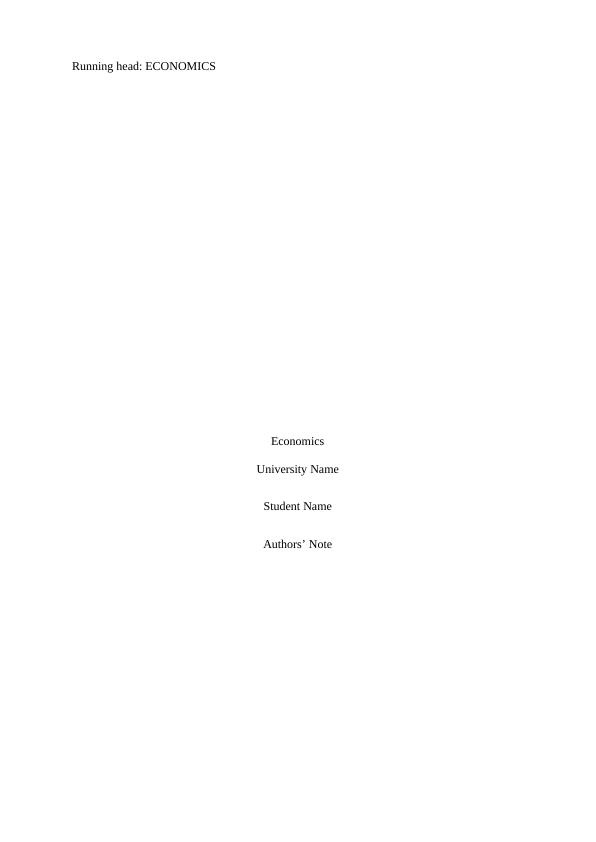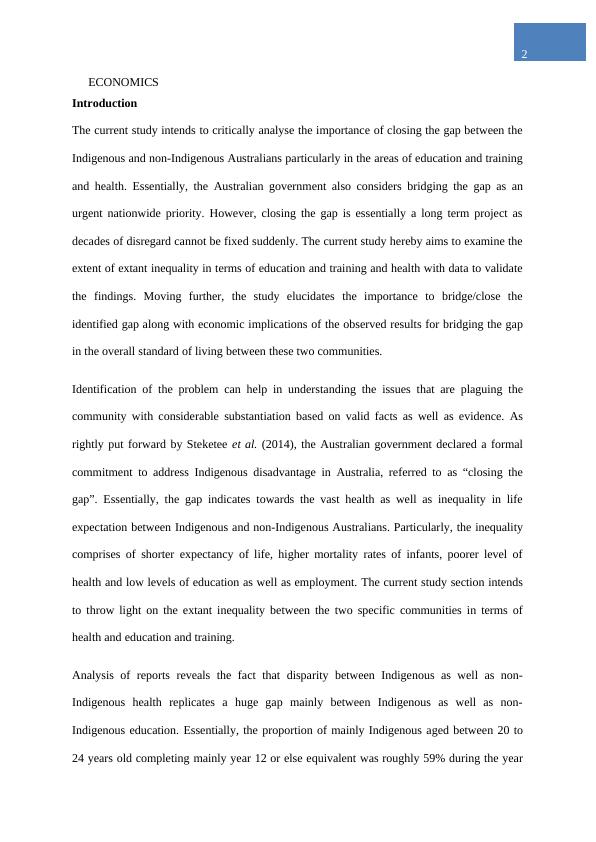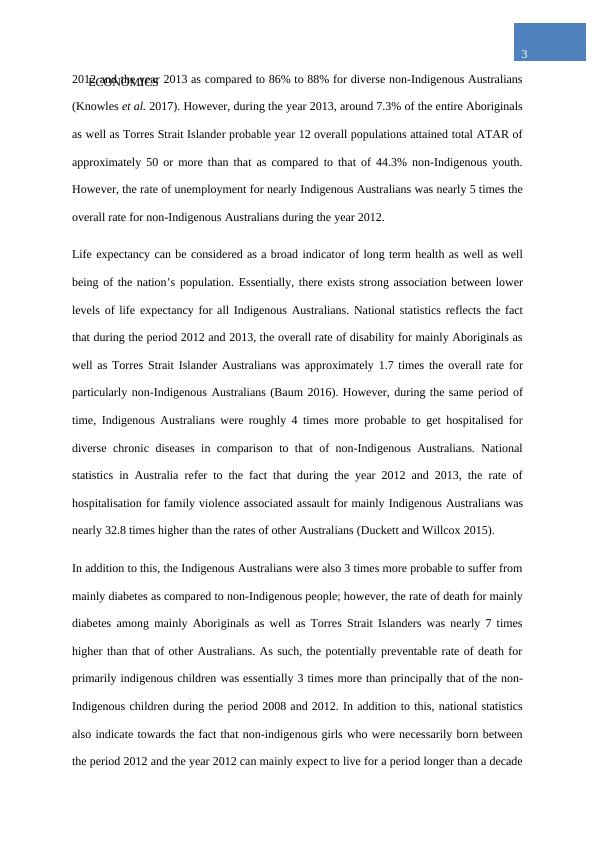Ask a question from expert
ECONOMICS 7 ECONOMICS Economics Student Name Authors' Note Introduction
7 Pages1817 Words304 Views
Added on 2020-04-21
About This Document
The current study section intends to throw light on the extent of extant inequality between the two specific communities in terms of education and training and health with data to validate the findings. However, during the year 2012 and 2013, the rate of hospitalisation mainly among non-Indigenous Australians was approximately 3 times more than that of the indigenous Australians (Duckett et al. In addition, during the year 2012 and 2013, the rate of hospitalisation mainly among non-Indigenous Australians was approximately 1.7 times more than that of the indigenous
ECONOMICS 7 ECONOMICS Economics Student Name Authors' Note Introduction
Added on 2020-04-21
BookmarkShareRelated Documents
End of preview
Want to access all the pages? Upload your documents or become a member.
Social Inequality in Health Australia Essay 2022
|15
|3986
|42
Health In Closing the Gap
|7
|1742
|143
Economics Paper Australia
|12
|2069
|65
Close the Gap Strategy and Government's Role in Bridging the Gap by 2030
|9
|2169
|96
Indigenous Population Health Care in Australia
|7
|2127
|87
PUBH6000: Social, Behavioural and Cultural Factors in Public
|9
|2074
|26


